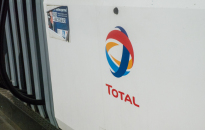
Alacer Gold announces further exploration results for the Çőpler District in Turkey
Canada NewsWire
TORONTO, March 31, 2016
TORONTO, March 31, 2016 /CNW/ - Alacer Gold Corp. ("Alacer" or the "Company") [TSX: ASR and ASX: AQG] is pleased to announce further drilling results from the Company's fourth quarter 2015 Çöpler District exploration program in Turkey. Drilling results are from an additional 5,063 meters of drilling at the Yakuplu North prospect approximately 5 km east of the Çöpler Mine. This is in addition to the drill results released on December 9, 20151 for Yakuplu Southeast, Yakuplu East, Yakuplu North and Bayramdere.
Rod Antal, Alacer's President & Chief Executive Officer, stated, "Our exploration efforts have been focused on identifying leachable oxide mineralization that is near our existing infrastructure at Çöpler. The positive results of the additional 5,000 meters of drilling at Yakuplu North are increasing the defined mineralization potential and will be the primary target in 2016. The 2016 drilling program has resumed with 9 drill rigs currently operating at Yakuplu North, supporting our objective of reporting a maiden resource on the broader Yakuplu and Bayramdere prospects later this year. The results of the systematic and focused exploration program in the Çöpler District are putting us in the position to potentially add oxide gold production from these prospects within the next two years."
EXECUTIVE SUMMARY
Yakuplu North is the largest of four currently defined prospects within a 5 km to 7 km proximity of the existing Çöpler Mine facilities. Initial results from exploration drilling at Yakuplu North were provided in a press release dated December 9, 2015. Further drilling conducted between November 19 to December 31, 2015 has defined additional oxide mineralization. Based on the results to date, the Yakuplu North prospect is being aggressively advanced through the resource development stage in 2016. The mineralization style is similar to the Çöpler Deposit and may be processed through the existing crushing and agglomeration circuit and stacked on the existing heap leach pad facility at Çöpler Mine.
DRILLING HIGHLIGHTS
Drilling from the Yakuplu North prospect in the Çöpler District in central eastern Turkey has continued to define near-surface leachable oxide mineralization. Key Yakuplu North drill results from November 19 to December 31, 2015, reporting intervals of >5m @ >1.00g/t Au include:
- YNDD004: 15.2m @ 1.00g/t Au from 199.0m (oxide)
- YNRC047: 9.0m @ 1.60g/t Au from 71.0m (oxide)
- YNRC047: 14.0m @ 1.02g/t Au from 112.0m (oxide)
- YNRC049: 8.0m @ 1.05g/t Au from 131.0m (oxide)
- YNRC049: 6.0m @ 1.03g/t Au from 157.0m (oxide)
- YNRC050: 5.0m @ 1.07g/t Au from 144.0m (sulfide)
- YNRC051: 5.0m @ 1.50g/t Au from 99.0m (oxide)
- YNRC051: 5.0m @ 2.24g/t Au from 120.0m (oxide)
- YNRC051: 6.0m @ 1.06g/t Au from 153.0m (oxide)
- YNRC051: 5.0m @ 1.05g/t Au from 190.0m (oxide)
- YNRC054: 45.0m @ 1.81g/t Au from 158.0m (oxide + sulfide)
- YNRC055: 9.0m @ 1.18g/t Au from 72.0m (oxide)
Yakuplu North drilling results continued:
- YNRC055: 9.0m @ 2.72g/t Au from 90.0m (oxide)
- YNRC058: 9.0m @ 7.74g/t Au from 153.0m (oxide)
- YNRC059: 9.0m @ 1.05g/t Au from 13.0m (oxide)
- YNRC059: 5.0m @ 20.25g/t Au from 130.0m (oxide)
- YNRC060: 11.0m @ 1.05g/t Au from 0.0m (oxide)
- YNRC062: 9.0m @ 1.06g/t Au from 35.0m (oxide)
- YNRC064: 16.0m @ 1.02g/t Au from 89.0m (oxide)
- YNRC064: 11.0m @ 1.00g/t Au from 138.0m (oxide)
- YNRC064: 12.0m @ 1.77g/t Au from 200.0m (oxide)
- YNRCD020: 20.0m @ 1.02g/t Au from 198.5m (oxide)
- YNRCD021: 19.0m @ 7.88g/t Au from 159.0m (oxide)
- YNRCD021: 7.0m @ 1.07g/t Au from 221.0m (oxide)
- YNRCD022: 20.4m @ 1.37g/t Au from 161.0m (oxide)
- YNRCD023: 5.0m @ 1.09g/t Au from 164.0m (oxide)
- YNRCD045: 6.8m @ 1.01g/t Au from 222.8m (oxide)
To view the complete drill assay results and further technical information relating to this news release, please visit the following link: http://www.alacergold.com/docs/default-source/press-releases/appendix-to-exploration-announcementfbc2d96bd1286d1694b8ff0000b8a5bc.pdf?sfvrsn=4 or visit the Company's website at www.alacergold.com.
ÇÖPLER DISTRICT EXPLORATION RESULTS
Alacer's exploration licenses surrounding the Çöpler Gold Mine span across a 17 km by 25 km area. The exploration licenses are managed under two separate joint ventures ("JV"). Alacer owns 80% of the licenses adjacent to Çöpler Mine under the Anagold Madencilik Sanayi ve Ticaret A.S. ("Anagold") JV and 50% of the remaining licenses in the Çöpler District under the Kartaltepe JV, both in partnership with Lidya Madencilik Sanayi ve Ticaret A.S. ("Lidya Mining").
ÇÖPLER DISTRICT 50/50% (KARTALTEPE) EXPLORATION RESULTS
Yakuplu North
Yakuplu North is a 2015 discovery that was identified from rock chip and soil sampling in early 2014. A drilling program commenced in June 2015 to define mineralized gossan on a 50m x 40m spacing over a potential strike length of 700m. To date, a total of 12,383 meters of reverse circulation ("RC") and diamond core drilling has been completed from 67 holes. The December 9, 2015 release disclosed the results from the first 7,320 meters of drilling from 36 holes.
Results presented in this release are from the ensuing 5,063 meters of RC drilling and diamond core drilling from 31 holes completed between November 19 and December 31, 2015.
There are multiple controls on mineralization with strong epithermal textures and associated structural overprints. As with the other Yakuplu prospects and Bayramdere, there is gossan hosted mineralization occurring along ophiolite and limestone contacts; however significantly, the main body of mineralization is associated with a subvertical shear zone of over 40m width and a potential mineralized extent of over a kilometer.
To date, high grade gold and negligible copper has been defined over a strike length of 700m. The mineralization is contained within shear hosted jasperoid and iron rich gossan. An aggressive development drilling program has begun to further test and extend the mineralized zone up and down dip, as well as along strike, and also to complete geotechnical, metallurgical and hydrogeological holes. Having defined a core high grade area, particular focus is being placed on closing the drill spacing in this area from 50m x 40m to 25m x 20m to a depth of 200m below surface for National Instrument 43-101 - Standards of Disclosure for Mineral Projects ("NI-43-101") compliant resource estimation in 2016.
Drilling in the latter half of 2016 will also step southward along strike of the Yakuplu North prospect to test whether shear hosted mineralization at the Yakuplu Main prospect can be connected to the Yakuplu North prospect. The Yakuplu Main prospect hosts the historic Yakuplu Main open pit where iron rich gossan was previously mined. Residual Yakuplu Main gossan stockpiles report gold values of >1.0g/t Au.
The Yakuplu North prospect plan and an example section with significant assays follows.
About Alacer
Alacer is a leading intermediate gold mining company, with an 80% interest in the world-class Çöpler Gold Mine in Turkey operated by Anagold and the remaining 20% owned by Lidya Mining. The Company's primary focus is to leverage its cornerstone Çöpler Mine and strong balance sheet to maximize portfolio value, maximize free cash flow, minimize project risk and, therefore, create maximum value for shareholders.
Alacer is actively pursuing initiatives to enhance value beyond the current mine plan:
- Çöpler Oxide Production Optimization – expansion of the existing heap leach pad to 58 million tonnes remains on track. Approximately 70% of the heap leach expansion area is within the existing mine permit area and that portion is currently under construction. The remaining 30% of the area necessary for final construction requires an additional land use permit that is currently awaiting final approval. The Company continues to evaluate opportunities to optimize and extend oxide production beyond the current reserves, including a new heap leach pad site to the west of the Çöpler Mine.
- Çöpler Sulfide Project – the Sulfide Project will deliver medium-term growth with robust financial returns and adds 22 years of production at Çöpler. The Sulfide Project will bring Çöpler's remaining Life-of-Mine gold production to 3.7 million ounces at industry low All-in Sustaining Costs2 averaging $637 per ounce. An Environmental Impact Assessment was approved in December 2014 and land use permits have progressed through the regulatory process and are awaiting final approval. Receipt of land use permits and a final Board of Directors' approval is required to advance the Sulfide Project construction. The Company continues detailed engineering and procurement of long-lead time items and a Project update will be provided in the coming months.
- The Company continues to pursue opportunities to further expand its current operating base to become a sustainable multi-mine producer with a focus on Turkey. The systematic and focused exploration efforts in the Çöpler District to locate additional oxide deposits, as well as in other regions of Turkey are progressing. Drilling and metallurgy work has been completed and is being evaluated on the Dursunbey project in western Turkey.
Detailed information regarding the Çöpler Sulfide Project can be found in the Technical Report dated March 27, 2015 available on SEDAR at www.sedar.com and on the Company's website.
Alacer is a Canadian company incorporated in the Yukon Territory with its primary listing on the Toronto Stock Exchange. The Company also has a secondary listing on the Australian Securities Exchange where CDIs trade.
Technical Procedural Information
Exploration drilling and sampling in Turkey utilized dominantly surface HQ and HQ3 triple-tube diamond core and 5 ¼ inch diameter RC drilling methods. Reverse circulation cuttings were sampled on 1.0m intervals and core was sampled systematically in 1.0m lengths as sawn half core in competent ground or hand split if in clay or broken fault zones. All drill sample assaying was performed by the SGS Ankara commercial assay laboratory in Turkey. Samples were analyzed for gold by Fire Assay off a 30 gram charge with an AAS finish, and analyzed for silver, copper, lead and zinc using a four acid digest ICP-AES method. Gold assays over 3g/t Au were automatically re-assayed by Fire Assay with a gravimetric finish. For silver, copper, lead and zinc assay results above the ICP-AES upper detection limits, samples were re-analyzed using a four acid digest with HCI leach and AAS finish. Quality Assurance/Quality Control measures included the insertion and continual monitoring of standards, blanks and duplicates inserted into the sample stream. QA/QC samples represent approximately 10% of all assay results received. Exploration and drilling results are reported as downhole drilled thicknesses. Drill hole significant assay intervals were calculated using a minimum downhole length of 5m @ >1.00g/t Au (body of text) or 2m @ >1.00g/t Au (Appendices). Grades were calculated using length weighted average sample grades for the interval. No top cut was applied.
Qualified Persons
The information in this release which relates to exploration results is based on information compiled by James Francis, BSc (Hons) Geology and MSc Mining Geology, MAusIMM, MAIG, who is a full-time employee of Alacer. Mr. Francis has sufficient experience which is relevant to the style of mineralization and type of deposit under consideration and to the activity which is being undertaking to qualify as a Competent Person as defined in the 2012 Edition of the "Australasian Code for Reporting of Exploration Results, Mineral Resources and Ore Reserves" and a qualified person pursuant to NI-43-101. Mr. Francis consents to the inclusion in this announcement of the matters based on this information in the form and context in which it appears.
Cautionary Statements
Except for statements of historical fact relating to Alacer, certain statements contained in this press release constitute forward-looking information, future oriented financial information, or financial outlooks (collectively "forward-looking information") within the meaning of Canadian securities laws. Forward-looking information may be contained in this document and other public filings of Alacer. Forward-looking information often relates to statements concerning Alacer's future outlook and anticipated events or results and, in some cases, can be identified by terminology such as "may", "will", "could", "should", "expect", "plan", "anticipate", "believe", "intend", "estimate", "projects", "predict", "potential", "continue" or other similar expressions concerning matters that are not historical facts.
Forward-looking information includes statements concerning, among other things, preliminary cost reporting in this press release, production, cost and capital expenditure guidance; ability to expand the current heap leach pad, development plans for processing sulfide ore at Çöpler; results of any gold reconciliations; ability to discover additional oxide gold ore, the generation of free cash flow and payment of dividends; matters relating to proposed exploration, communications with local stakeholders and community relations; negotiations of joint ventures, negotiation and completion of transactions; commodity prices; mineral resources, mineral reserves, realization of mineral reserves, existence or realization of mineral resource estimates; the development approach, the timing and amount of future production, timing of studies, announcements and analysis, the timing of construction and development of proposed mines and process facilities; capital and operating expenditures; economic conditions; availability of sufficient financing; exploration plans; receipt of regulatory approvals and any and all other timing, exploration, development, operational, financial, budgetary, economic, legal, social, regulatory and political matters that may influence or be influenced by future events or conditions.
Such forward-looking information and statements are based on a number of material factors and assumptions, including, but not limited in any manner to, those disclosed in any other of Alacer's filings, and include the inherent speculative nature of exploration results; the ability to explore; communications with local stakeholders and community and governmental relations; status of negotiations of joint ventures; weather conditions at Alacer's operations, commodity prices; the ultimate determination of and realization of mineral reserves; existence or realization of mineral resources; the development approach; availability and final receipt of required approvals, titles, licenses and permits; sufficient working capital to develop and operate the mines and implement development plans; access to adequate services and supplies; foreign currency exchange rates; interest rates; access to capital markets and associated cost of funds; availability of a qualified work force; ability to negotiate, finalize and execute relevant agreements; lack of social opposition to the mines or facilities; lack of legal challenges with respect to the property of Alacer; the timing and amount of future production and ability to meet production, cost and capital expenditure targets; timing and ability to produce studies and analysis; capital and operating expenditures; economic conditions; availability of sufficient financing; the ultimate ability to mine, process and sell mineral products on economically favorable terms and any and all other timing, exploration, development, operational, financial, budgetary, economic, legal, social, regulatory and political factors that may influence future events or conditions. While we consider these factors and assumptions to be reasonable based on information currently available to us, they may prove to be incorrect.
You should not place undue reliance on forward-looking information and statements. Forward-looking information and statements are only predictions based on our current expectations and our projections about future events. Actual results may vary from such forward-looking information for a variety of reasons including, but not limited to, risks and uncertainties disclosed in Alacer's filings at www.sedar.com and other unforeseen events or circumstances. Other than as required by law, Alacer does not intend, and undertakes no obligation to update any forward-looking information to reflect, among other things, new information or future events.
Appendix 2 - JORC Code Table 1
The following tables are provided to ensure compliance with the JORC Code (2012) edition requirements for the reporting of exploration results.
Section 1 Sampling Techniques and Data
(Criteria in this section apply to all succeeding sections.)
| | | |
| Criteria | JORC Code explanation | Commentary |
| Sampling Techniques | Nature and quality of sampling (eg cut channels, random chips, or specific specialised industry standard measurement tools appropriate to the minerals under investigation, such as down hole gamma sondes, or handheld XRF instruments, etc). These examples should not be taken as limiting the broad meaning of sampling. |
|
| Include reference to measures taken to ensure sample representivity and the appropriate calibration of any measurement tools or systems used. |
| |
| Aspects of the determination of mineralization that are Material to the Public Report. In cases where 'industry standard' work has been done this would be relatively simple (eg 'reverse circulation drilling was used to obtain 1 m samples from which 3 kg was pulverised to produce a 30 g charge for fire assay'). In other cases more explanation may be required, such as where there is coarse gold that has inherent sampling problems. Unusual commodities or mineralization types (eg submarine nodules) may warrant disclosure of detailed information. |
| |
| Drilling Techniques | Drill type (eg core, reverse circulation, open-hole hammer, rotary air blast, auger, Bangka, sonic, etc) and details (eg core diameter, triple or standard tube, depth of diamond tails, face-sampling bit or other type, whether core is oriented and if so, by what method, etc). |
|
| Drill Sample Recovery | Method of recording and assessing core and chip sample recoveries and results assessed. |
|
| Measures taken to maximize sample recovery and ensure representative nature of the samples. |
| |
| Whether a relationship exists between sample recovery and grade and whether sample bias may have occurred due to preferential loss/gain of fine/coarse material. |
| |
| Logging | Whether core and chip samples have been geologically and geotechnically logged to a level of detail to support appropriate Mineral Resource estimation, mining studies and metallurgical studies. |
|
| Whether logging is qualitative or quantitative in nature. Core (or costean, channel etc) photography. |
| |
| The total length and percentage of the relevant intersections logged. |
| |
| Sub-Sampling Techniques and Sample Preparation | If core, whether cut or sawn and whether quarter, half or all core taken. |
|
| If non-core, whether riffled, tube sampled, rotary split, etc and whether sampled wet or dry. | RC samples are drilled using a face sampling hammer with samples collected via a rig side-mounted cyclone and rotary cone splitter. Samples are collected dry. Occasional moist samples are collected at top of sample intervals following 3m rod changes. Samples remain dry during metre by metre blow-out of contaminants in cyclone and cone splitter. Duplicate samples are collected using a 50/50 Jones riffle splitter at the drill rig. | |
| For all sample types, the nature, quality and appropriateness of the sample preparation technique. |
| |
| Quality control procedures adopted for all sub-sampling stages to maximise representivity of samples. |
| |
| Measures taken to ensure that the sampling is representative of the in situ material collected, including for instance results for field duplicate/second-half sampling. |
| |
| Whether sample sizes are appropriate to the grain size of the material being sampled. |
| |
| Quality of Assay Data and Laboratory Tests | The nature, quality and appropriateness of the assaying and laboratory procedures used and whether the technique is considered partial or total. |
|
| For geophysical tools, spectrometers, handheld XRF instruments, etc, the parameters used in determining the analysis including instrument make and model, reading times, calibrations factors applied and their derivation, etc. |
| |
| | Nature of quality control procedures adopted (eg standards, blanks, duplicates, external laboratory checks) and whether acceptable levels of accuracy (ie lack of bias) and precision have been established. |
|
| Verification of Sampling and Assaying | The verification of significant intersections by either independent or alternative company personnel. |
|
| The use of twinned holes. |
| |
| Documentation of primary data, data entry procedures, data verification, data storage (physical and electronic) protocols. |
| |
| Discuss any adjustment to assay data. |
| |
| Location of Data Points | Accuracy and quality of surveys used to locate drill holes (collar and down-hole surveys), trenches, mine workings and other locations used in Mineral Resource estimation. |
|
| Specification of the grid system used. |
| |
| Quality and adequacy of topographic control. |
| |
| Data Spacing and Distribution | Data spacing for reporting of Exploration Results. |
|
| Whether the data spacing and distribution is sufficient to establish the degree of geological and grade continuity appropriate for the Mineral Resource and Ore Reserve estimation procedure(s) and classifications applied. |
| |
| Whether sample compositing has been applied. |
| |
| Orientation of Data in Relation to Geological Structure | Whether the orientation of sampling achieves unbiased sampling of possible structures and the extent to which this is known, considering the deposit type. |
|
| If the relationship between the drilling orientation and the orientation of key mineralised structures is considered to have introduced a sampling bias, this should be assessed and reported if material. |
| |
| Sample Security | The measures taken to ensure sample security. |
|
| Audits or Reviews | The results of any audits or reviews of sampling techniques and data. |
|
Section 2 Reporting of Exploration Results
| | | |
| Criteria | JORC Code explanation | Commentary |
| Mineral Tenement and Land Tenure Status | Type, reference name/number, location and ownership including agreements or material issues with third parties such as joint ventures, partnerships, overriding royalties, native title interests, historical sites, wilderness or national park and environmental settings. |
|
| The security of the tenure held at the time of reporting along with any known impediments to obtaining a licence to operate in the area. |
| |
| Exploration Done by Other Parties Werbung Mehr Nachrichten zur Alacer Gold Aktie kostenlos abonnieren
E-Mail-Adresse
Bitte überprüfe deine die E-Mail-Adresse.
Benachrichtigungen von ARIVA.DE (Mit der Bestellung akzeptierst du die Datenschutzhinweise) -1  Vielen Dank, dass du dich für unseren Newsletter angemeldet hast. Du erhältst in Kürze eine E-Mail mit einem Aktivierungslink. Hinweis: ARIVA.DE veröffentlicht in dieser Rubrik Analysen, Kolumnen und Nachrichten aus verschiedenen Quellen. Die ARIVA.DE AG ist nicht verantwortlich für Inhalte, die erkennbar von Dritten in den „News“-Bereich dieser Webseite eingestellt worden sind, und macht sich diese nicht zu Eigen. Diese Inhalte sind insbesondere durch eine entsprechende „von“-Kennzeichnung unterhalb der Artikelüberschrift und/oder durch den Link „Um den vollständigen Artikel zu lesen, klicken Sie bitte hier.“ erkennbar; verantwortlich für diese Inhalte ist allein der genannte Dritte. Andere Nutzer interessierten sich auch für folgende News |





